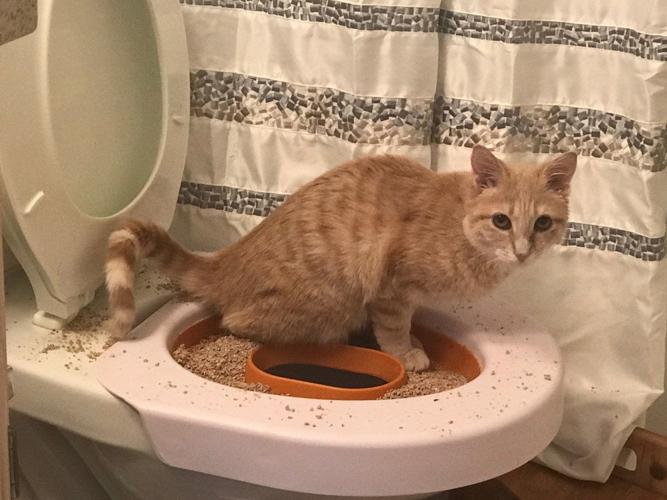Dangers of Flushing Cat Poop Down Your Toilet - Avoid Potential Issues
Dangers of Flushing Cat Poop Down Your Toilet - Avoid Potential Issues
Blog Article
Have you been trying to locate content on Don’t flush cat feces down the toilet?

Introduction
As feline owners, it's essential to be mindful of how we take care of our feline friends' waste. While it might seem convenient to purge cat poop down the bathroom, this technique can have damaging effects for both the setting and human health and wellness.
Ecological Impact
Purging cat poop presents harmful pathogens and parasites right into the water, posturing a substantial risk to marine ecosystems. These contaminants can negatively impact marine life and compromise water high quality.
Health and wellness Risks
Along with environmental problems, purging pet cat waste can also posture health and wellness risks to humans. Feline feces might contain Toxoplasma gondii, a bloodsucker that can trigger toxoplasmosis-- a possibly severe illness, specifically for expectant women and individuals with damaged immune systems.
Alternatives to Flushing
Fortunately, there are more secure and a lot more responsible means to get rid of feline poop. Think about the following alternatives:
1. Scoop and Dispose in Trash
One of the most typical technique of disposing of pet cat poop is to scoop it into a biodegradable bag and throw it in the trash. Make sure to use a dedicated trash scoop and deal with the waste quickly.
2. Usage Biodegradable Litter
Opt for naturally degradable cat litter made from materials such as corn or wheat. These trashes are environmentally friendly and can be securely taken care of in the trash.
3. Bury in the Yard
If you have a backyard, think about hiding feline waste in an assigned area away from vegetable gardens and water sources. Make certain to dig deep adequate to prevent contamination of groundwater.
4. Set Up a Pet Waste Disposal System
Purchase a pet garbage disposal system especially developed for cat waste. These systems utilize enzymes to break down the waste, lowering smell and ecological influence.
Verdict
Responsible pet dog ownership expands past offering food and sanctuary-- it also entails correct waste management. By refraining from flushing cat poop down the toilet and opting for different disposal methods, we can reduce our environmental impact and secure human health.
Why Can’t I Flush Cat Poop?
It Spreads a Parasite
Cats are frequently infected with a parasite called toxoplasma gondii. The parasite causes an infection called toxoplasmosis. It is usually harmless to cats. The parasite only uses cat poop as a host for its eggs. Otherwise, the cat’s immune system usually keeps the infection at low enough levels to maintain its own health. But it does not stop the develop of eggs. These eggs are tiny and surprisingly tough. They may survive for a year before they begin to grow. But that’s the problem.
Our wastewater system is not designed to deal with toxoplasmosis eggs. Instead, most eggs will flush from your toilet into sewers and wastewater management plants. After the sewage is treated for many other harmful things in it, it is typically released into local rivers, lakes, or oceans. Here, the toxoplasmosis eggs can find new hosts, including starfish, crabs, otters, and many other wildlife. For many, this is a significant risk to their health. Toxoplasmosis can also end up infecting water sources that are important for agriculture, which means our deer, pigs, and sheep can get infected too.
Is There Risk to Humans?
There can be a risk to human life from flushing cat poop down the toilet. If you do so, the parasites from your cat’s poop can end up in shellfish, game animals, or livestock. If this meat is then served raw or undercooked, the people who eat it can get sick.
In fact, according to the CDC, 40 million people in the United States are infected with toxoplasma gondii. They get it from exposure to infected seafood, or from some kind of cat poop contamination, like drinking from a stream that is contaminated or touching anything that has come into contact with cat poop. That includes just cleaning a cat litter box.
Most people who get infected with these parasites will not develop any symptoms. However, for pregnant women or for those with compromised immune systems, the parasite can cause severe health problems.
How to Handle Cat Poop
The best way to handle cat poop is actually to clean the box more often. The eggs that the parasite sheds will not become active until one to five days after the cat poops. That means that if you clean daily, you’re much less likely to come into direct contact with infectious eggs.
That said, always dispose of cat poop in the garbage and not down the toilet. Wash your hands before and after you clean the litter box, and bring the bag of poop right outside to your garbage bins.
https://trenchlesssolutionsusa.com/why-cant-i-flush-cat-poop/

I hope you enjoyed our piece about Don’t flush cat feces down the toilet. Thanks for taking the time to browse our article post. I beg you take the time to promote this entry if you enjoyed it. Thank you so much for taking the time to read it.
Book Inspection Report this page